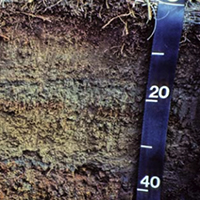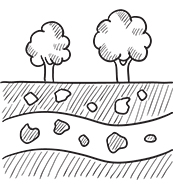Our interview series celebrating 100 years of the National Park Service in the United States and the important role soil plays in these parks continues. We head to Hilo, Hawaii to talk about the soils of Hawai’i Volcanoes National Park with Amy Koch, Assistant Director for Soil Science with the Natural Resources Conservation Service, Pacific Islands Area.

Conversations with Soil Experts: An Interview with Amy Koch

Amy Saunders Koch is the Assistant Director for Soil Science with the Natural Resources Conservation Service (NRCS), Pacific Islands Area. She has worked with NRCS for over 12 years, with ten years in Hawaii. Amy earned her bachelor’s degree in Environmental Science from Virginia Tech and master’s degree in Soil Science from Utah State University. She currently oversees soil science and natural resource assessments for Hawaii, American Samoa, Guam, Commonwealth of the Northern Mariana Islands, Republic of Palau, Federated States of Micronesia, and the Marshall Islands.
Photo: Amy Koch at National Geographic’s BioBlitz held at Hawaii Volcanoes National Park in Spring 2015. Soil shown is the Manu series.
What is Unique About the Soils of Hawai’i Volcanoes National Park?
The soils of Hawai’i Volcanoes National Park tell the story of the many eruptions of Kilauea and Mauna Loa volcanoes, detailing the geologic history of the landscapes within the park. Hawai’i Volcanoes National Park is unique because over half of the park has no soil at all, but instead is covered by lava flows or cinders.
In areas that do have soil, many of the soils are shallow to lava flows. Some soils are organic soils that form a thin layer of soil over young lava flows. Other soils are volcanic ash soils that have many layers, or horizons, that have been deposited over thousands of years during different eruption events. However, the most unique feature of Hawai’i Volcanoes National Park is the fact that the soils and landscape are changing each day as Kilauea volcano continuously erupts, its lava flows covering the landscape and creating new land that will one day support soils.




